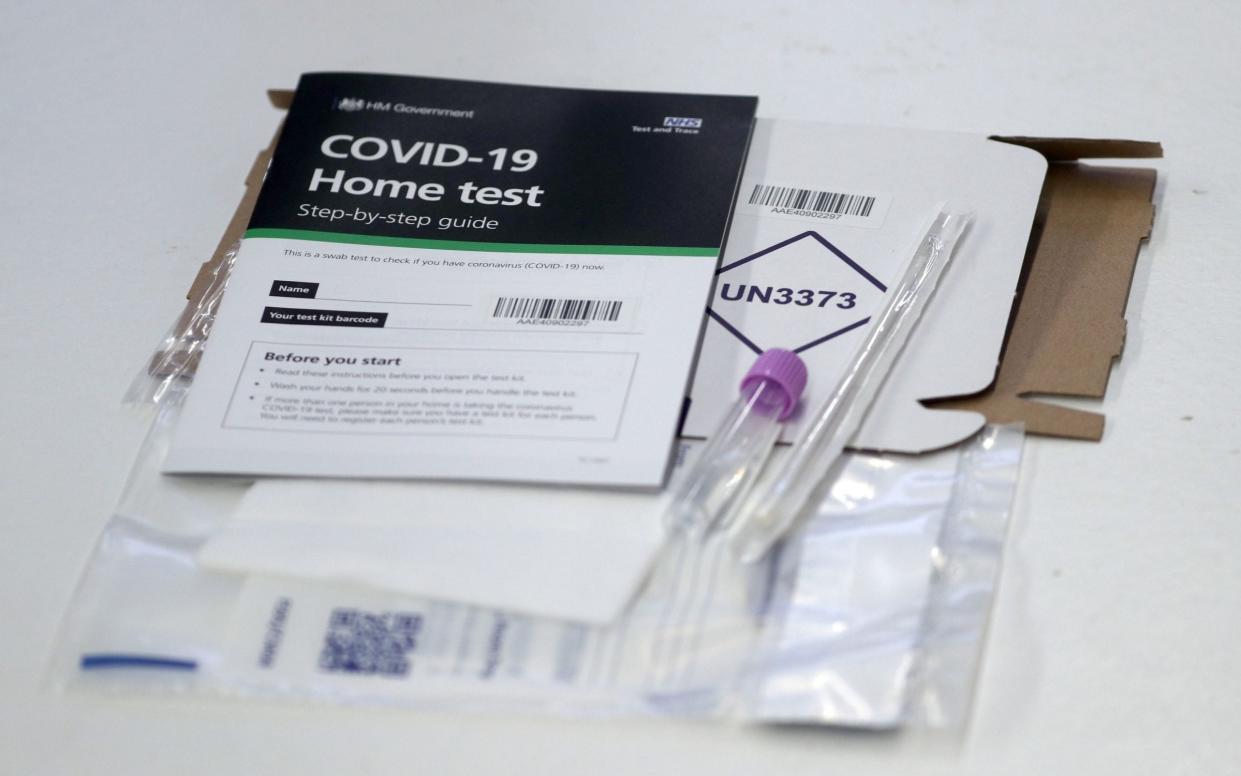Covid infection rates in England are slowing down, figures show

Infection rates in England appear to be slowing down, new data from the Office for National Statistics (ONS) suggest, following a slump in reported daily cases in the past fortnight.
The weekly ONS infection survey shows that cases rose just 15 per cent between the weekend ending July 17 and July 24, compared to rises of 28 per cent, 73 per cent and 57 per cent in the past three bulletins.
The team said that although the figures did not reflect the rapid drop seen in the Government’s daily reported data, four in 10 of the cases they picked up were asymptomatic so were less likely to show up in dashboard numbers.
Duncan Cook, deputy director for the Covid-19 Infection Survey (CIS), said: “The latest ONS data suggest infections have continued to increase in England, though there are possible signs that the rate of increase may have slowed.
“These new official statistics do not reflect the recent dip in the daily testing figures in England, so it’s important to understand the differences between the two sources.
“Our survey tests a large randomised sample of the population and provides an independent estimate of infections in the wider community.
“It’s notable that around 40 per cent of positive tests in the ONS study are from people who show no symptoms of infection. This group is therefore less likely to show up in the daily figures.”
Scientists said that Friday’s figures were too early to pick up the major declines seen in recent weeks.
Prof Paul Hunter, professor in medicine at the University of East Anglia, said: “The important point to point out is that the ONS survey largely covers a period prior to the decline in cases, especially as this is a prevalence survey and people can be positive for some time after acquiring their infection.
“We will have to wait till next week before we can see any indication of the recent decline in cases. Generally, changes in ONS data lag about two weeks behind daily cases data.”
Prof Kevin McConway, emeritus professor of applied statistics at The Open University, also said the ONS data would not pick up the recent changes for a few weeks.
“Some of the people who tested positive in the survey in the most recent week, 18-24 July, would have originally been infected the week before, or in some cases even earlier than that.”
New cases in England on the dashboard were increasing for most of the previous week (July 11-17) and indeed for a considerable time before that.
“So it’s possible that the new infections in the CIS figures for the week 18-24 July are indeed down on the new infections the previous week, but that we can’t see that in the prevalence estimates because the number of older infections from the previous week or weeks is hiding it.”
Data from the King’s College ZOE app, which is usually a week ahead of the government figures, also suggests that cases have stopped rising.
It is estimated that among unvaccinated people in the UK, there are currently 36,102 new daily symptomatic cases of Covid-19 on average, based on PCR and LFT test data from up to five days ago, very slightly below last week’s figure of 36,250.
Comparatively, there are currently 10,268 new daily cases in people who have had one dose, and 14,110 new daily cases in fully vaccinated people.
The overall number of estimated daily new symptomatic cases is 60,480 and has remained stable over the past six days, suggesting that new cases of Covid-19 have stopped rising in the UK, the team said.
Tim Spector, lead scientist on the ZOE Covid Study app and professor of genetic epidemiology at King’s said: “Cases have stopped rising for the last week and are holding steady around the 60,000 mark.”
Most recent government data show that cases have risen for the past two days after falling dramatically last weekend.
However, Thursday’s daily figure of 31,117 is well below the highest reported figure in this wave of 54,674, and 28 per cent lower than Thursday July 22.
The smoothed-out weekly rolling case rates also show a 37 per cent drop in the previous week, with average daily cases now below 30,000.
Dr Alastair Grant, from the University of East Anglia, calculated that the median R-value for the week ending July 27 was just 0.66, with only Lincoln above 1 (at 1.05) and Torridge and Beckland at 1.

 Yahoo News
Yahoo News 
